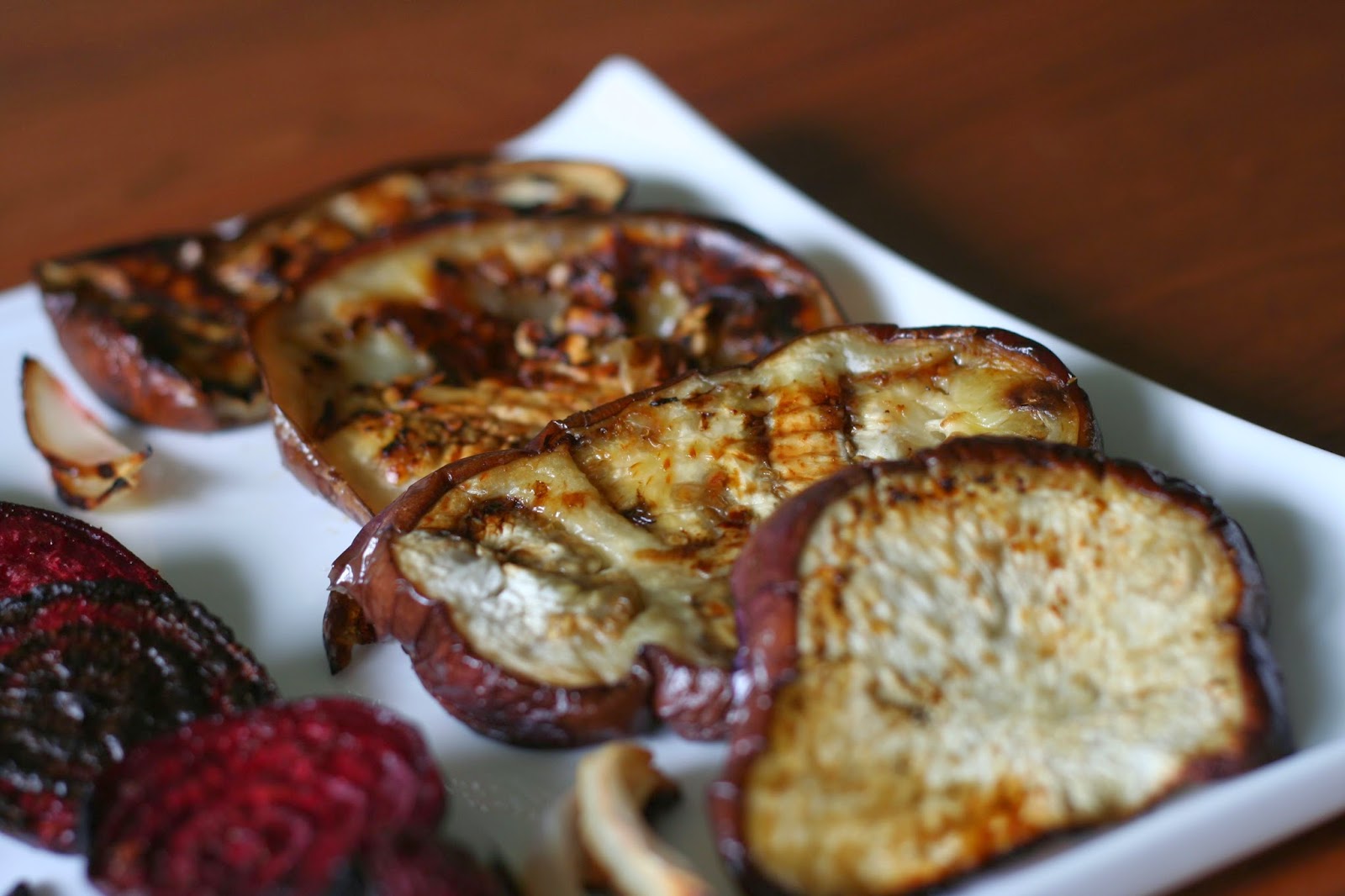Is there such a thing as a numb brain? One that is frozen from overwork and abuse? Well, I think I had one most of last week.
One evening, I got home from work with a full hour to spare till dinner. (Wow, that's a luxury.)
I opened the fridge and found - miracle of miracles - a drawer full of nice produce. (Wow, that's a luxury.)
But my brain was completely dead. Numb. Out to lunch. And I couldn't think of anything creative or interesting to do with them.
Roasted Anything
When I say anything, I don't really mean anything. So, just to be sure - here's a list of veggies you could substitute: sweet potatoes, string beans, tomatoes (sliced thick), peppers. Keep a close eye on them though. Some will get done faster than others.
1 zucchini or summer squash, scrubbed clean and sliced in ½ inch slices
2 medium beets, peeled and sliced in ¼ inch slices
1 onion, cut in wedges
1 large eggplants, washed and sliced in ½ inch slices
salt and pepper
4 tablespoons olive oil
Preheat the oven to 400*.
Pour two tablespoons oil onto each of two large baking sheets. Brush it over the baking sheets with a brush or paper towel.
On half of one sheet, spread the zucchini slices out on the oil. Let them rest for a few seconds to soak up the oil and then flip the slices. Sprinkle with salt and pepper.
On the other half of the same sheet, spread the beet slices and onion wedges. Again, let them rest a few seconds and then flip them over. Sprinkle with salt and pepper. (Sorry if this is sounding familiar.)
Finally, on the second sheet, spread out your eggplant slices. Rest and flip. Salt and pepper.
Bake for about ½ hour, flipping the slices halfway through baking. They may need more or less time depending on the thickness and precise oven temperature. Be sure to check frequently so they don't burn.
Serve warm or at room temperature. (Leftovers are great tossed in a salad.)





















































